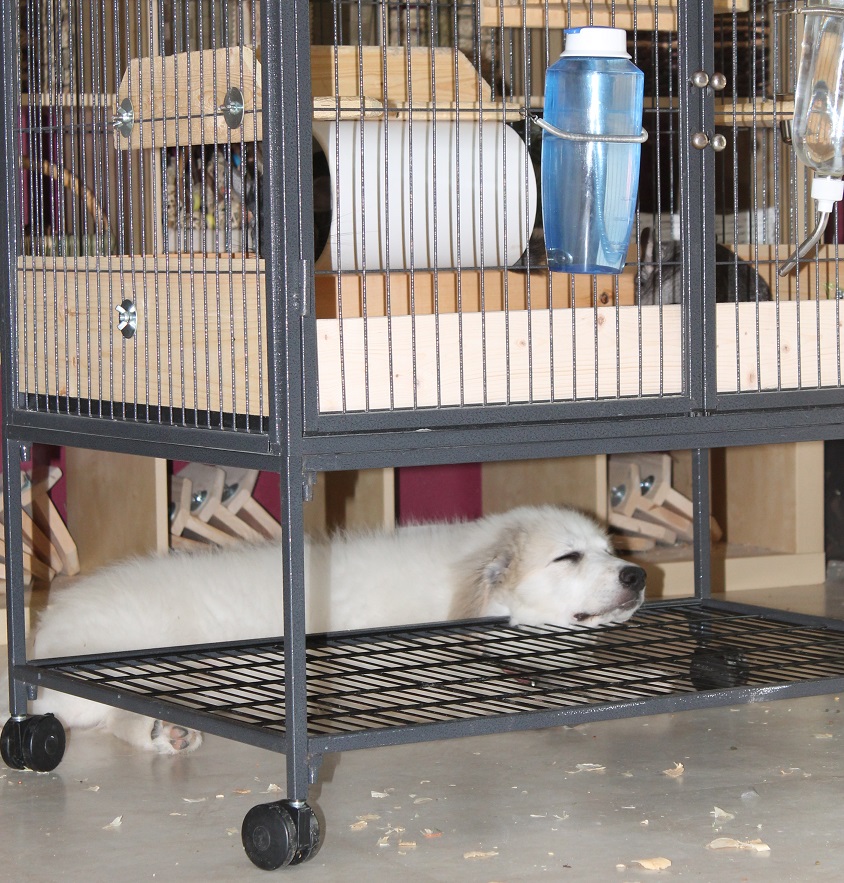Happy December everyone!
For the month of November, one (1) chinchilla was surrendered and three (3) chinchillas were adopted. We had one person bring in a chinchilla for pairbonding and never returned to claim them. The legal requirements for going through abandonment procedure is both time consuming and frustrating. In this case, the false hope of an adoption with pairbonding was simply deceitful. I laugh when people tell me they wish they could do what I do. Rescue work is not all about taking in cute, sad animals. More often than not we receive elderly, ill-tempered or sickly chins with grossly unclean, completely inadequate cages. We are met with a variety of illnesses and medical issues that have given us hands-on experience.
Animal rescue nearly killed me…literally. I almost died this year from zoonosis when a certain bacteria from a pair of rescue chins made its way into my lungs. As an asthmatic, pasteurellosis of the lungs is particularly life threatening. Today I would like to talk about cross-species disease transmission.
Pathogens can and do cross between species. A chinchilla can catch a cold from their people, contract fungus from someone who has athlete’s foot, acquire Pasteurella from the house rabbit and more. On the flip side, humans can contract certain diseases from their pets. These can translate as eye infections, skin infections, parasitic infestations, respiratory issues of a bacterial nature, etc.
Handwashing before and after handling your pet seems like a common sense procedure, no? But seriously, how many people really do that? How easy is it to walk by a cage, give a quick scritch or treat and move on to other tasks or pets? At home we generally have a good feel for the health of our pets and environment. In a shelter or rescue situation, there is more opportunity for disease transmission. One time we had a wildlife rehabber come visit who had ringworm patches exposed on her arms. Yup. For the next few months we struggled to contain and eradicate ringworm from the herd.
At home, letting your interspecies pets “play” together can be a deadly combination. Many rabbits carry the Pasteurella bacteria and show no signs or symptoms. In chinchillas that same bacteria is deadly. Unvaccinated horses can pass on strangles, which is also deadly to chins. Rodents can leave behind droppings full of listeria which can be found in hay and hay based products. It is this very reason why we advise against purchasing hay from your local farmer as most are stored where wild rodents can freely roam. So even the cleanest of homes with the most reliable quality supplies is still subject to contamination.
With this in mind, one of the ways you can keep your pet healthy is to watch for signs and symptoms of anything that may be “off”. As pet guardians, we generally have a good idea what normal behavior is for our individual animals. Pet forums are a great place to compare notes and learn from those who have experienced and treated specific issues. Armed with information we can be better advocates when it comes to partnering with our veterinarians. The hard part is being bold enough to resist deferring to someone based on education rather than experience.
It is our sincerest wish that yours and our chinchillas remain healthy and happy.
Merry Christmas and Happy New year to all.








